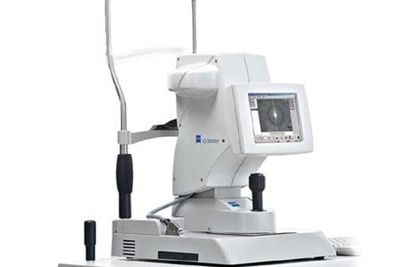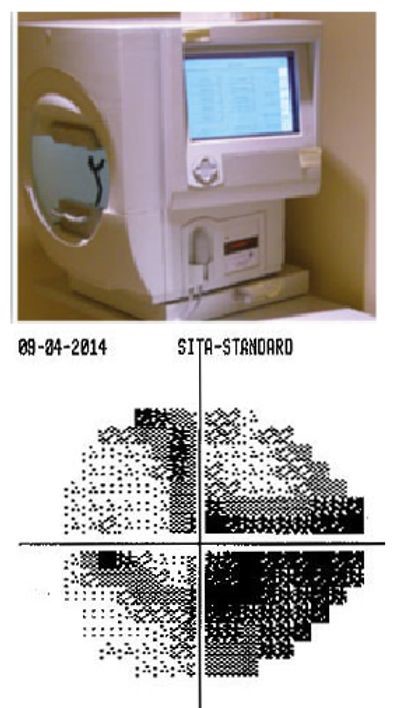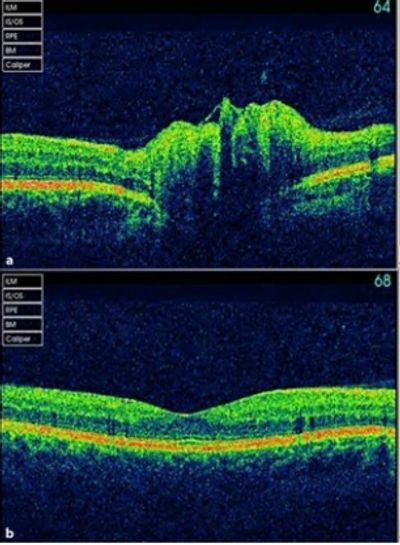IOL Master

The main goal of your eye surgeon is to provide you with the best vision care possible. IOLMaster testing is available to help achieve this goal. The IOLMaster uses laser technology to measure the length of the eye. Measuring the length of the eye accurately is extremely important in cataract surgery, as it allows the eye surgeon to select the right lens to implant for each patient. The IOLMaster is the latest technology in measuring the length of the eye. It is more accurate than any other method that has been used in the past, including the ultrasound test currently available. The IOLMaster provides an extra piece of information that provides the greatest accuracy possible in choosing the lens for your surgery. In many cases the increase in accuracy provided can reduce the need for glasses after surgery. IOLMaster testing is non-essential and is not covered by OHIP.
The ultrasound testing also performed at your eye surgeon’s office is very accurate and is covered by OHIP. IOLMaster testing is an option available for patients who would like the best possible accuracy and the latest and best technology. Please let your eye surgeon know if you are interested in having IOLMaster testing to help with your cataract surgery or if you would like more information to help with your decision.

Visual Field Testing
Because it has no noticeable symptoms, glaucoma is a difficult disease to detect without regular, complete eye exams. One particular test, called a visual field test (or perimetry test), measures all areas of your eyesight, including your side, or peripheral, vision. A visual field test can help find certain patterns of vision loss and is a key way to check for glaucoma. It is very useful in finding early changes in vision caused by nerve damage from glaucoma. To take this painless test, you sit at a bowl-shaped instrument called a perimeter. While you stare at the center of the bowl, lights flash. Each time you see a flash you press a button. A computer records the location of each flash and whether you pressed the button when the light flashed in that location. At the end of the test, a printout shows if there are areas of your field of vision where you did not see the flashes of light. This test shows if you have any areas of vision loss. Loss of peripheral vision is often an early sign of glaucoma.
Visual field testing is used together with the clinical exam and HRT or OCT testing to determine if you have glaucoma or if your glaucoma is worsening. Visual field testing is usually done at least once or twice a year or more if your disease severity warrants closer surveillance.
Optical Coherence Tomography (OCT)

Optical coherence tomography (OCT) is a retinal scan used to study the anatomy of the retina and optic nerve in fine detail. OCT testing requires dilation of the pupils but does not require a needle in the arm and does not involve touching the eye. A healthy retina is only ¼ of a millimeter thick, but it contains multiple layers of specialized cells. One layer converts light into nerve signals, another processes the nerve impulses, while another transmits these processed impulses to the brain where they are interpreted. OCT testing is like having an optical biopsy of the retina and optic nerve; it provides excellent visualization of these structures, and aids greatly in the diagnosis and treatment of glaucoma and of retinal disorders like AMD.
Not every patient needs an OCT test. In Ontario OCT testing is now covered by OHIP for retinal disease and glaucoma testing. In some circumstances OCT testing may not be covered by OHIP; the cost for testing varies between offices but the Canadian Ophthalmological Society recommends that charges for this test be approximately $198.
Heidelberg Retinal Tomography (HRT)

The Heidelberg Retina Tomograph is a system that combines a laser scanning camera and specialized software that evaluates the optic nerve. The HRT may diagnose glaucoma years before symptoms become apparent to the patient. The HRT gives measurements of size, depth and shape of the optic nerve and is especially useful at detecting small changes over time. The HRT exam takes just a few moments; it is a painless, non-invasive test and dilation of the eye is usually not necessary. The HRT is an accurate way to follow your disease progression and we may order repeat exams periodically to check your progress. This test provides additional information that will help your doctor to diagnose and monitor your glaucoma. This test is not covered by OHIP and the charge is $100 for this test payable on testing day.
